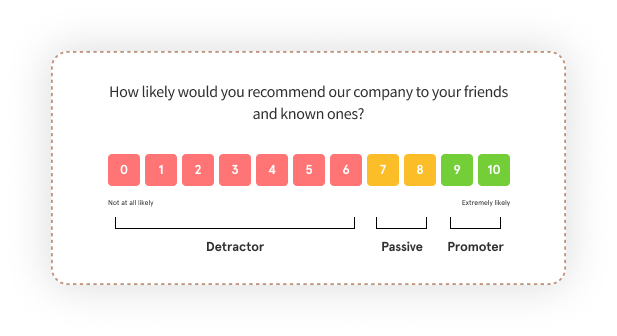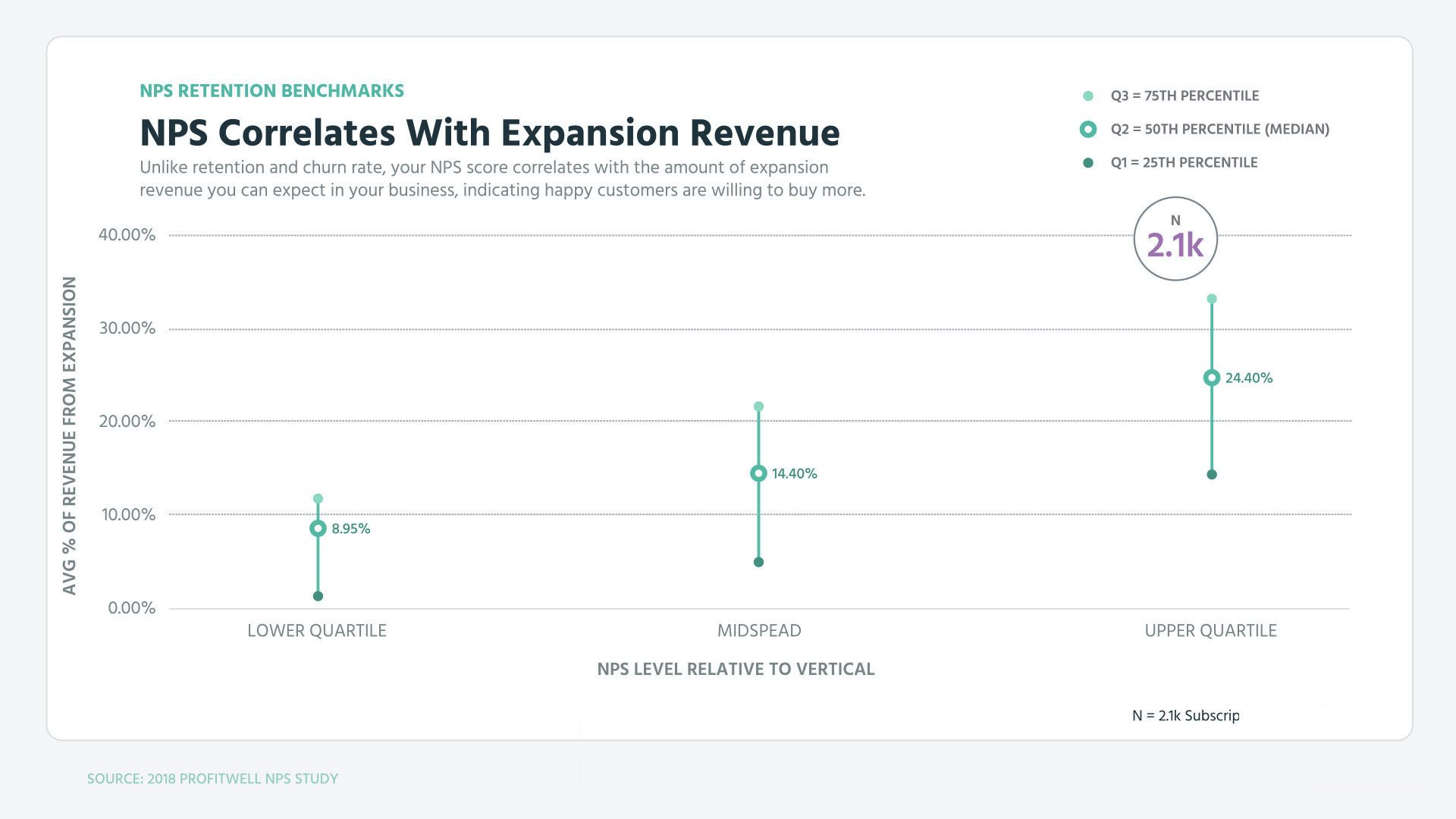Imagine discovering that your top customers—those you thought were your biggest fans—are silently slipping away, taking their business and their referrals with them. It’s a scenario no enterprise wants to face, yet it’s a reality for companies that overlook the importance of measuring customer loyalty. This is where Net Promoter Score (NPS) becomes indispensable.
NPS provides a clear, quantifiable metric that reveals how likely your customers are to recommend your business to others, giving you direct insight into their loyalty and satisfaction.
Without regularly measuring NPS, you’re flying blind, missing critical opportunities to enhance customer experiences and mitigate churn.
In this article, we’ll delve into the five compelling reasons why measuring NPS is not just a good practice but a vital one for any business committed to long-term success.
TL;DR
- NPS is a key metric that measures customer loyalty by asking how likely they are to recommend your business to others. It categorizes respondents into Promoters, Passives, and Detractors, providing insights into overall customer sentiment.
- A higher NPS is strongly linked to increased revenue growth, as loyal customers tend to spend more, stay longer, and refer others, driving both direct and referral business.
- Measuring NPS helps you track customer loyalty, identify areas of dissatisfaction early, align your business strategy with customer expectations, reduce churn, and boost word-of-mouth marketing.
- You can start measuring and improving your NPS with Zonka Feedback. With this tool, you can create NPS surveys, gather real-time insights, automate tasks and close the feedback loop efficiently. Schedule a demo with our experts.
Measure Customer Loyalty with NPS ❤️
Create NPS surveys, measure customer loyalty, and close the feedback loop with Zonka Feedback.

Picture this: You're about to take the plunge on a new smartphone. It checks all the boxes: sleek design, impressive specs, and a price tag that doesn't break the bank. But before you hit "buy now," you instinctively turn to online reviews. You're not just looking for specs; you want to know how the phone feels in someone else's hands. Will the battery life actually last a day? Is the camera truly amazing? This is where the Net Promoter Score (NPS) comes in.
What is Net Promoter Score (NPS)?
NPS is more than just a number; it's a window into your customers' hearts (or at least, their minds). Developed by Fred Reicheld, Bain & Company and Satmetrix in 2003, Net Promoter Score is a simple yet powerful metric that measures how likely your customers are to recommend your business to a friend or colleague. On a scale of 0 to 10, customers rate their experience, and their answers are sorted into three categories:
- Promoters: The customers rating 9 and 10 are promoters and are most likely to recommend your products to their friends and family. They can even try their best to convince their known ones to go with your brand.
- Detractors: Those customers who give the ratings from 0 to 6 are called detractors. They may be so dissatisfied with your product that they will try to stop their known ones to opt your brand, let alone recommending your product to anybody.
- Passives: Those who give 7 or 8 come under passives. They will usually neither recommend your product nor spread any bad word of mouth about it.

By calculating the percentage of Promoters and Detractors, you get your NPS score. It ranges from -100 to 100. A high NPS indicates a loyal customer base, while a low score signals trouble ahead. The Net Promoter Score enables you to benchmark the loyalty of your customers and predict their purchase and referral behavior.
But NPS isn't just about the number; it's about the stories behind those numbers. It's about understanding why customers love (or hate) you, and using that knowledge to improve.
How to Calculate the Net Promoter Score (NPS)?
Calculating your Net Promoter Score is straightforward. Simply subtract the percentage of detractors from the percentage of promoters.
For example, let’s say you’ve received 300 survey responses:
- 45 respondents rated your business between 0 and 6—these are your detractors
- 60 respondents rated you between 7 and 8—these are your passives
- 195 respondents rated you between 9 and 10—these are your promoters
When you calculate the percentages, you find that 15% are detractors, 20% are passives, and 65% are promoters.
So, your NPS would be calculated as 65% (Promoters) - 15% (Detractors) = 50.
You can also use an online NPS calculator to quickly know your Net Promoter Score.
What are the Benefits of Net Promoter Score?
Even though the Net Promoter Score helps you measure customer loyalty, you might be wondering what would you exactly gain from using NPS to measure customer loyalty? Let’s find out the some of the benefits of Net Promoter Score.
- Helps to Identify Various Customer Segments: By categorizing customers into Promoters, Passives, and Detractors, NPS allows you to segment your audience more effectively. You can go a step beyond and further analyze NPS responses based on demographics, purchase behavior, or other criteria to take specific actions. This segmentation helps in tailoring marketing strategies, offering personalized experiences, and targeting interventions where they’re most needed.
- Provides a Predictive Indicator of Business Health: NPS is not just a reflection of current customer sentiment; it's a forward-looking metric that can predict future business performance. A high NPS suggests a strong potential for growth, as loyal customers are more likely to make repeat purchases and refer others, creating a positive cycle of revenue generation.
- Encourages Cross-Departmental Collaboration: NPS insights are valuable across various departments—from marketing to product development to customer service. Sharing NPS data encourages cross-departmental collaboration, ensuring that everyone in your organization is aligned with customer-centric goals.
- Benchmark Against Competitors: Knowing how you stack up against the competition is important for business growth. You can compare your NPS to industry standards and your rivals to see where you stand. This information can help you identify areas for improvement and gain a competitive edge.
- Prioritize Product Development: Your customers hold the key to your product's success. By analyzing NPS feedback, you can discover what features they love and what's missing. You can then use this information to create products that truly resonate with your audience.
- Optimize Marketing Campaigns: Want to know if your marketing efforts are paying off? NPS can help you measure the impact of your campaigns by tracking customer loyalty. Based on your results, you can invest in what works and cut back on what doesn't.
- Measure Employee Engagement: Believe it or not, your employees' satisfaction directly impacts customer loyalty. By measuring employee engagement with eNPS, you can create a positive work environment that leads to happier customers.
How NPS Correlates to Business Growth?
The relationship between Net Promoter Score (NPS) and business growth is not just anecdotal; it's backed by substantial research. Studies conducted by leading institutions like Harvard Business Review, Satmetrix, and Bain & Company consistently reveal a strong correlation between NPS and a company's revenue growth. When businesses adopt NPS as a core metric, they don't just measure customer loyalty—they actively drive it, leading to tangible improvements in their bottom line.

ProfitWell found a direct correlation between NPS and expansion revenue. Companies in the top NPS quartile saw a whopping 24% of their monthly revenue coming from existing customers, compared to just 9% for those in the bottom quartile. That's a staggering difference!
Apple is a prime example for NPS impact on revenue. Their loyal customer base, often characterized by high NPS scores, has fueled consistent growth and premium pricing for years.
Why Net Promoter Score is Important?
Let us look at some of the major reasons why NPS is considered so important across industries.
1. To Measure Customer Loyalty & Drive Revenue
Customer loyalty is the bedrock of sustainable growth. The number one reason to start using NPS Surveys is of course to measure customer loyalty. It is a determining factor for customers continuing to do business with you and increasing their spending as well.
Did you know that 66% of U.S. consumers are willing to spend more on brands they are loyal to? Furthermore, 59% of customers will recommend a brand they love to friends and family, and 36% will spend more. This makes NPS an essential tool for quantifying loyalty and driving business growth.
To maximize the impact of NPS:
- Benchmark your NPS: Compare your NPS to industry standards and competitors to identify strengths and weaknesses. This provides a clear picture of your competitive position.
- Tie NPS to Financial Performance: Quantify the ROI of loyalty by demonstrating the direct correlation between NPS and revenue growth to secure executive buy-in.
2. To Identify & Address Dissatisfaction Early
NPS is more than a surface-level metric. It's a treasure trove of actionable insights. NPS doesn’t just tell you who your promoters and detractors are—it tells you why they feel that way. This dual power of qualitative and quantitative feedback can be a game-changer. By analyzing the "why" behind the score, you can unlock hidden opportunities for growth and innovation.
Imagine you run a software company and you noticed a drop in your NPS. By following up with detractors, you discovered that recent updates were causing frustration. Armed with this insight, you can now roll out a fix which would not only increase customer satisfaction but also revitalize product roadmap.
Research shows that 96% of unhappy customers don’t complain, and 91% of those simply leave and never return. NPS gives those silent critics a voice, allowing you to identify areas of improvement before it’s too late.
By treating NPS as a strategic tool, you can transform your business from a product-centric to a customer-centric organization.
Key to extracting maximum value from NPS:
- Qualitative analysis: Uncover the root causes of customer sentiment through open-ended questions and responses.
- Segment your Customer Base: Analyze NPS by customer segments (e.g., demographics, purchase behavior, tenure) to identify specific areas for improvement. This tailored approach using NPS segmentation allows for more targeted interventions.
- Correlate NPS with other KPIs: Analyze the relationship between NPS and key performance indicators like customer lifetime value, churn rate, and revenue growth to understand the overall impact on business performance.
💡Pro Tip: Use NPS survey tools like Zonka Feedback's AI-powered sentiment analysis to dig deeper into open-ended responses. Look for recurring issues and prioritize fixing them. This will not only improve your NPS but also reduce churn.
3. To Align Business Strategy with Customer Expectations
Your customers know what they want better than anyone else, and NPS is the tool that captures these insights directly from the source. Aligning your business strategy with customer feedback not only ensures satisfaction but also drives innovation.
For instance, say you run a fitness brand and are struggling with declining membership. By analyzing your NPS feedback, you discovered a demand for more personalized workout plans. In response to this, you can launch a successful app offering tailored fitness routines. This would not only increase customer satisfaction but also attract a new demographic, driving significant growth for your business in a previously untapped market.
Businesses that actively incorporate customer feedback into their strategy see a 10% higher retention rate. Aligning your offerings with what customers actually want ensures that your strategy is not just aligned with market trends, but with real customer needs.
To align your business strategy with customer expectations, you can:
- Prioritize Customer-Centric Innovation: Make customer feedback the cornerstone of your product roadmap and service development. Create dedicated innovation teams focused on translating customer insights into tangible solutions.
- Co-create with Customers: Involve customers in the product development process through beta testing, focus groups, and online communities. This fosters a sense of ownership and drives deeper engagement.
- Create a Feedback Loop: Implement systems to capture customer feedback at every touchpoint. Close the loop by communicating actions taken in response to feedback, building trust and credibility.
- Measure and Iterate: Continuously track the impact of customer-driven initiatives on NPS and key business metrics. Use data-driven insights to refine your strategy and optimize performance.
4. To Reduce Customer Churn Rate & Increase Retention
The cost of acquiring a new customer is significantly higher than retaining an existing one. Retaining a customer is 5-25% less costly than acquiring a new one, and a 5% increase in retention can boost profits by 25% to 95%.
NPS is your safeguard against unnecessary customer churn, helping you keep customers happy and loyal.
By closely monitoring NPS trends, you can identify customers at risk of churning before it’s too late. A low NPS often correlates with higher churn rates. Moreover, categorizing customers into Promoters, Passives, and Detractors helps pinpoint segments most likely to leave.
To reduce customer churn, you can:
- Identify At-Risk Customers: Use NPS scores in conjunction with other customer data (e.g., purchase frequency, support interactions) to create a comprehensive churn risk model.
- Proactive Outreach: Reach out to customers showing signs of churn with personalized offers, incentives, or enhanced support.
- Offer Personalized Retention Plans: Create tiered retention plans based on customer value and churn risk. Provide tailored benefits and incentives to encourage continued loyalty.
- Close the Feedback Loop: We can't emphasize this enough. Closing the feedback loop is extremely essential in NPS program. You have to demonstrate a genuine commitment to resolving customer issues by addressing concerns promptly and effectively.
💡Pro Tip: Empower your customer service teams to resolve issues on the spot with flexible solutions, then follow up with NPS detractors to ensure their satisfaction—turning potential churn into a loyalty boost.
5. To Boost Referral Marketing & Amplify Word of Mouth
Your most satisfied customers are your most powerful advocates. By identifying and empowering these promoters, you can ignite a virtuous cycle of growth. NPS provides a clear roadmap for unlocking this potential. By segmenting customers based on their scores, you can focus your efforts on those most likely to refer your brand.
Dropbox is a prime example of a company that successfully leveraged its promoters. By offering generous referral incentives and making it easy for users to share their referral links, Dropbox experienced explosive growth through word-of-mouth marketing. Their focus on creating a product that people loved and rewarding those who spread the word propelled them to massive success.
Do you know an impressive 92% of consumers trust recommendations from friends and family over any other form of advertising? By harnessing the power of your promoters through NPS, you can build a robust, cost-effective referral engine that drives growth.
To maximize the impact of referral marketing:
- Create Irresistible Incentives: Offer rewards that genuinely excite customers, such as exclusive products, early access to new features, or significant discounts.
- Leverage User-Generated Content: Encourage NPS promoters to share their experiences through authentic reviews, testimonials, and social media posts.
- Build a Referral Engine: Develop a seamless referral program with clear instructions, automated tracking, and timely rewards delivery.
- Measure and Optimize: Track referral metrics like conversion rates, customer lifetime value, and referral costs to refine your strategy.
3 Crucial Considerations for Your NPS Journey
NPS is a powerful tool, but it's not a magic wand. To maximize its impact, keep these three essential factors in mind:
1. NPS is a Loyalty Indicator, Not a Satisfaction Meter
While NPS gives you a pulse check on customer loyalty, it doesn't reveal the full picture of customer satisfaction. Think of it as a loyalty thermometer, not a satisfaction barometer. To truly understand what drives loyalty (or its absence), complement NPS with in-depth customer feedback surveys. This will help you analyze customer satisfaction level in depth and take corrective actions, thereby improving customer relationships.
2. The Power of the Follow-Up
An NPS score without context is like a puzzle with missing pieces. The magic happens when you ask "Why?" Encourage customers to elaborate on their rating for NPS question with open-ended questions. These insights will illuminate the path to improvement.
3. Action is the Key
NPS isn't just about collecting data; it's about driving change. A successful NPS program hinges on closing the feedback loop. Listen to your customers, act on their insights, and then communicate the results. This builds trust and demonstrates your commitment to enhancing the customer experience.
Conclusion
The journey with NPS is one of continuous learning and adaptation. Measuring NPS is important so that you can continuously refine your strategies, address customer concerns, and foster deeper loyalty, so that your business remains aligned with evolving customer expectations.
When implemented thoughtfully, NPS doesn't just measure how well you're doing; it drives meaningful change that enhances customer satisfaction and leads to business success.
So, as you embark on or refine your NPS journey, utilize an effective NPS tool like Zonka Feedback that offers NPS survey templates for every use case, multichannel survey distribution to collect feedback at every critical touchpoint in customer journey, and real-time reporting and analytics to stay updated.
With its powerful AI-driven analytics, Zonka Feedback not only calculates your NPS but also dives deep into the "why" behind the scores, analyzing customer sentiments, emotions, and intent. The platform’s real-time reporting and automated alerts enable prompt action, helping you close the feedback loop effectively and turn detractors into promoters and promoters into brand advocates.
Remember that the true power of NPS lies not just in the scores you collect, but in the actions you take.
Schedule a demo to harness the full potential of NPS and set your business on a path of sustainable success!










